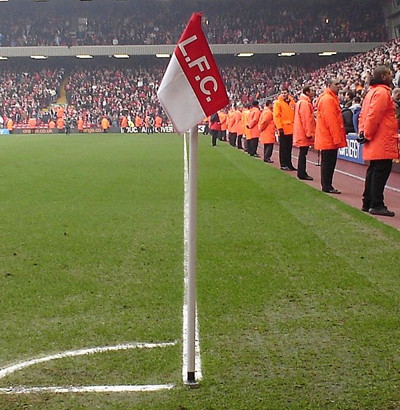
Never let it be said that this site doesn’t give you information on every possible thing about football that you could ever hope to know… In the past we’ve had a look at such topics as how football clubs make money, when the Football Association was formed and even the origins of the shape of the football itself.
Today’s sermon is about the humble corner flag, looking at why it is the shape that it is and why it was even used in the first place, as well as numerous other things. It might seem an obvious invention to us nowadays, but when football first began there didn’t seem to be a particularly big need for one; after all, wouldn’t players be honest and just say whether the ball had gone out of play or not?
Corner flags play a functional role, of course, but they also do a lot more than that. We’ll talk you through some of the best celebrations that players have performed with the only prop they can quickly get their hands on, to say nothing of other…less savoury stories that have occurred over the years.
We’ll also explain why the corner flag might be a place to look when trying to figure out any success the club you’re watching has or has not enjoyed in the past. As with so many things associated with football, there are stories to be found if you’re willing to look for them. On this page we’ll do our best to give you a potted history of one of the game’s least spoken about aspects…
The History Of The Corner Flag
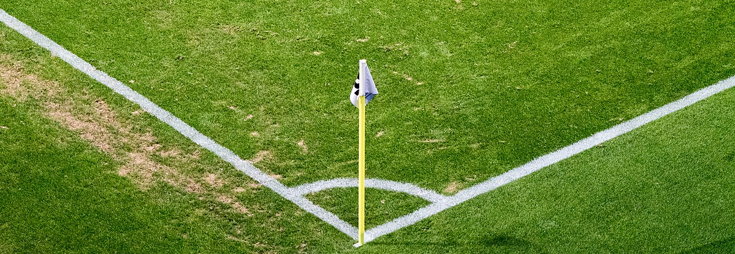
The corner kick itself was introduced into football as part of the Sheffield Rules in 1868. Prior to that there was a system of what was known as ‘rouges’, whereby a four yard goal was used with a flag planted four yards to each side of the goal. If the ball was kicked out of play between the flag and the goal and then touched down, a point was awarded to the attacking team. It was a rule borrowed from Eton and you can see a similar system remains in place in Australian rules football. The number of rouges scored were used to determine the winner of a tied game.
In 1868 the Sheffield Rules were adapted to get rid of the rouge system, replacing it with goal kicks and corner kicks. The Football Association was the dominant force in the country at the time, with different teams playing by different rules depending on their location in the country. In fact, when teams that had been playing under the Sheffield Rules joined the FA they were initially allowed to continue playing by the same rules. Nevertheless, the FA was run by pragmatic people who realised that football would benefit from the best rules being used, regardless of the organisation that created them. Consequently the corner kick itself became part of the Football Association rules in 1872.
Information about when flags were introduced lacks a degree of specificity. For example, the 1863 rules said the following: “The maximum length of the ground shall be 200 yards, the maximum breadth shall be 100 yards, the length and breadth shall be marked off with flags”. Yet whether that’s saying that flags as we understand them today be used or that flags run along the length and breadth of the pitch is unclear. After all, we know that the corner kick was brought in to the rules nine years later, so where were the flags in the meantime? It is likely that the abandonment of rouges in favour of corners led to the flags that were originally placed four yards from the goal being pushed further back.
One thing we can tell you for certain is that Law 17 of the Laws of the Game states that ‘The corner flagpost must not be moved’, whilst in the part of Law 1 labelled ‘The corner area’ it says, “The corner area is defined by a quarter circle with a radius of 1m (1yd) from each corner flagpost drawn inside the field of play.” There is also a section of the same Law referring specifically to flagposts that states, “A flagpost, at least 1.5m (5ft) high, with a non-pointed top and a flag must be placed at each corner. Flagposts may be placed at each end of the halfway line, at least 1m (1yd) outside the touchline.”
The Shape Of The Flag
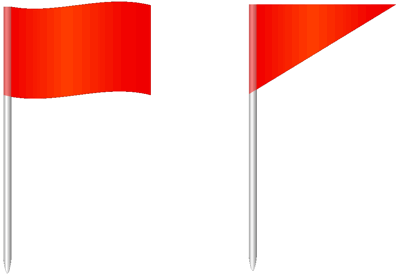
There is an interesting quirk in play when it comes to the flag that is attached to the end of the pole. According to football folklore, only clubs that have won the FA Cup are allowed to place triangular flags on their poles, with all other teams requiring square ones. In reality, however, there is no law within the Laws of the Game that dictates this to be the case.
Instead, it’s merely a tradition that clubs have chosen to adhere to and essentially ‘self-police’. If you were to have a look at the corner flag being used by the club hosting the match that you were watching you might find that they’ve gone for a triangular flag, but don’t automatically assume that that means they’ve won the FA Cup.
As an example it’s worth having a look at Liverpool Football Club. The Reds were playing with square flags when Brendan Rodgers took over as manager, but the Northern Irishman decided that he wanted to re-introduce as many traditions as possible back to Anfield. This included the return of red nets and a use of triangular corner flags. The former did happen but the latter did not, with the square flags remaining in place throughout Rodgers’ reign at the club. It seems as though whether a club decides to display square or triangular flags is a decision that the groundskeeper makes rather than a hard and fast rule that must be abided.
Celebrations
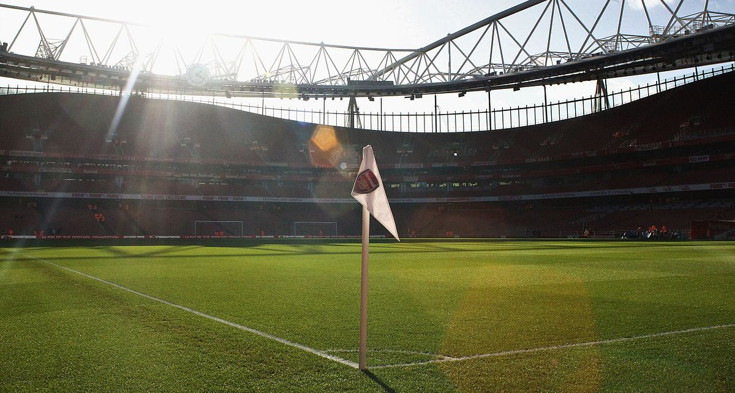
Given that the corner flag is one of few ‘props’ a player can find in the moments after he’s scored a goal, it’s little wonder that so many of them use it to aid their celebrations. Perhaps one of the best-known of these was the former Everton player Tim Cahill, who used to shadow box’ against the flag every time he scored. He isn’t the only player to have interacted with the flag in such a memorable fashion, however. Roger Milla stole a number of hearts during the FIFA World Cup in Italy in 1990 when he scored for Cameroon and raced to the corner in order to ‘dance’ with the flag.
When playing for Manchester United, Lee Sharpe would perform what became known as the ‘Sharpie Shuffle’ when he scored, running to the corner flag before shuffling and thrusting his groin towards supporters. This developed to the point that he did an Elvis impression, grabbing the flag and pulling it down to use as a microphone. In 2009 Frank Lampard scored a goal against Everton for Chelsea in the FA Cup final and decided to celebrate by running around the flag whilst holding onto it. It was an homage to a celebration his dad had performed after scoring against Everton at the semi-final stage of the same competition in 1980.
Two former Aston Villa players, quite coincidentally, have unleashed their joy at scoring goals by kicking the corner flag clean out of the ground. The first occurred in 2009 when John Carew booted the flag post so hard that it actually ended up in the stand at the Holte End. In 2013 Christian Benteke scored his first hat-trick in English football and actually ended up breaking the corner flag when he kicked it.
Controversies
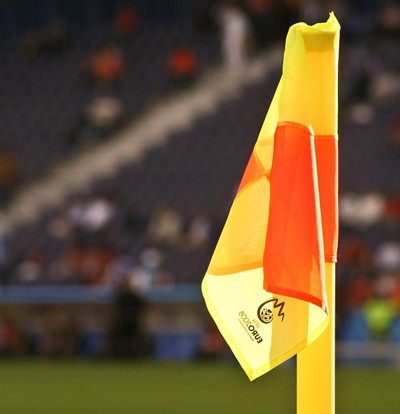
The corner flag hasn’t always been used for purely joyful purposes. Indeed, there are two high-profile examples of it being used in controversial circumstances. In 2009, for example, Nottingham Forest were playing host to their local rivals Derby County. There has always been bad blood between the two sets of fans and the situation wasn’t helped when Nathan Tyson picked up the corner post with the Forest flag on it and waved it in front of the Derby supporters after Forest won 3-2, provoking a mass brawl between the two sets of players and their coaching staff.
Then there’s the tale of Birmingham City’s ground and the ‘curse’ that was placed on it. According to City folklore, the club found the space where St. Andrew’s would be built but before any work could be carried out a family of travellers had to be evicted. They responded by putting a one-hundred year curse on the area. The first ever match at the newly completed football ground was delayed by an hour because of snowfall, it was badly damaged during the Second World War and and in 1942 a fire destroyed most of the Main Stand when a police officer threw what he thought was water over a fire, only for it to be petrol.
When Barry Fry was appointed Birmingham City manager in 1993. Though he won his first two games in charge, the Blues failed to win any of the following fifteen matches they played there over the subsequent three months. When Fry found out about the ‘curse’ he asked a local traveller what could be done to break it, only to be told that the solution was to urinate on each of the four corner flags. Fry said, “It took me a while – it’s not that easy”. Whether it worked or was all a nonsense is open to conjecture, but City won seven of the next ten games that they played.
